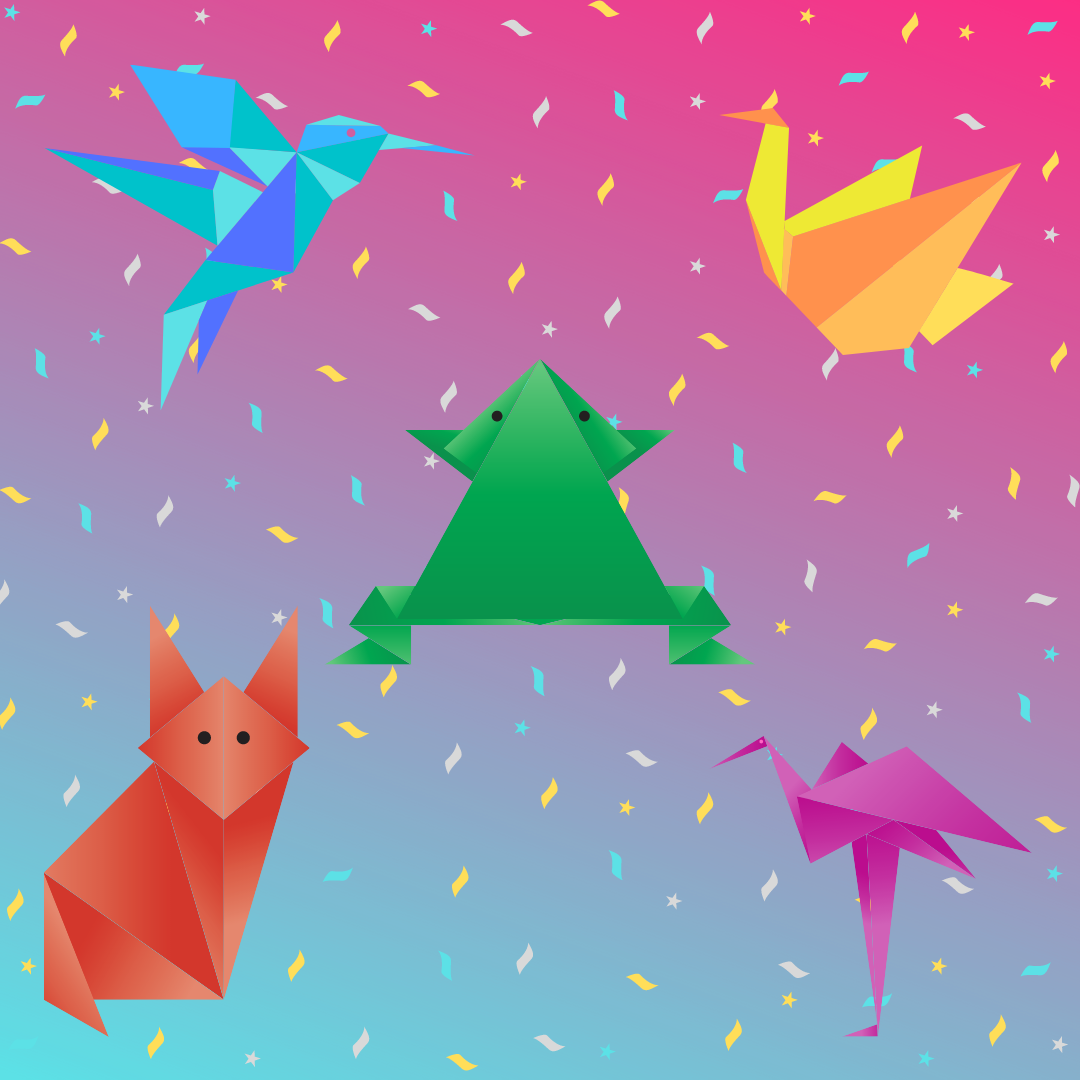May is Asian-Pacific Heritage Month
May is Asian-Pacific American Heritage Month—a celebration of Asians and Pacific Islanders in the United States. A rather broad term, Asian-Pacific encompasses all of the Asian continent and the Pacific islands of Melanesia (New Guinea, New Caledonia, Vanuatu, Fiji, and the Solomon Islands), Micronesia (Marianas, Guam, Wake Island, Palau, Marshall Islands, Kiribati, Nauru, and the Federated States of Micronesia) and Polynesia (New Zealand, Hawaiian Islands, Rotuma, Midway Islands, Samoa, American Samoa, Tonga, Tuvalu, Cook Islands, French Polynesia, and Easter Island).
It is incredibly important to educate ourselves and our children about our Asian-Pacific American neighbors, especially because of all the misinformation spreading around due in-part to the coronavirus pandemic. The more we inform ourselves, the more we can understand the Truth, the less fear and hate we help spread!
We got a lot of our suggestions below from The U.S. Dept. of Education, and we have added our own ideas as well! Please share some of the ways you make learning fun in your home in the comments!
History and Culture
HISTORICAL LANDMARKS: Teach your kids about the Great Wall of China, and then use ALL THE BLOCKS YOU HAVE (we are talking duplos, legos, wooden blocks, plush blocks, couch cushions, everything!) to make the longest wall you can!
Here is a great book about it: The Emperor who built the Great Wall of China — This is part of a whole series of children’s books on the History of China, and it’s incredible!
Go for a visit: Pretend you are going to be visiting a country on the Asian continent or one of the Pacific Islands, and plan your imaginary trip! You can research tourist sites, talk about the food you’re going to eat there, what language you would have to learn to speak, etc! You can even look up local music on YouTube or Spotify. Who knows? This may be such a fun experience that you want to do this for real!
Japan: Travel for Kids — Here is a great example of a “travel book” you could look up to help with this immersive learning experience!
Explore AAPI history: From helping build the first transcontinental railroad to protecting the nation during times of war, Asian Americans and Pacific Islanders (AAPIs) have played significant roles in shaping modern history. Help your kids learn more about how AAPIs have enriched America’s history, by visiting some online resources.
Geography
Make a globe: Help your kids cut and wrap a map of the world around a ball. Show kids how big Asia is compared to our North American continent. As you make it, you can point out the Pacific Ocean area of the world, and how Asia is on the opposite side of the world from us.
Books on Countries: Geography books like Where in Asia is Malaysia? help kids (and their parents) to understand how diverse the Asian continent is!
Arts Connections
Make lei: Tell your kids that lei, which are garlands, are made and given for occasions like marriages, birthdays, and lu’aus. Colorful flowers and greenery are braided, twisted, wrapped, or strung together to create lei for the neck, head, wrists, and ankles. Take construction paper and/or tissue paper and twine to make your own lei. Have a lu’au (see Healthy Eating below) and wear them, or give them to friends.
Check out an art exhibit: Consider the diverse cultures of the AAPI community by looking at Asian art. Check out the Smithsonian’s Museum of Asian Art online. Point out to your kids how some of this art uses mediums like ink on paper; have your kids try their hand at creating similar art with basic supplies, such as paper, pencil, and chalk. Older kids may like to compare the similarities and contrast the differences in media used and subjects chosen.
Social Studies
There are 48 countries in Asia: Write them all down and have your kids put them in alphabetical order!
Find out more other cultures: Ask your kids how many countries make up the Asian-Pacific area of the world. Let them know that it’s not a small number, but instead over three dozen. Put the names of some Asian countries (e.g., Japan, China, South Korea, Philippines, Vietnam) each on a separate piece of paper, crumple into a ball, and put in a pile for kids to pick one. What do they know about that country’s location in the world, what language(s) people might speak, what foods they might eat, and what kind of climate they have.
Help older kids appreciate a multitude of diverse ethnic backgrounds by exploring the Smithsonian photo gallery A Day in the Life of Asian Pacific America. Older kids may also like to read about what steps agencies, such as the National Endowment for the Humanities, have taken to preserve the APPI heritage.Have a lu’au: Our own state of Hawaii is part of the Asian-Pacific culture. Tell your kids that a lu’au is a traditional Hawaiian feast; today the lu’au is a celebration that brings together an entire family and community. The lu’au is a contemporary expression of a traditional Hawaiian feast set with food cooked in an earthen pit oven, covered with hot rocks and leaves; food can include fish, pork, and coconut dishes. Help kids contribute a dish, like Haupia, which is Hawaiian coconut pudding, to the family meal.
History of Origami: Origami is a beautiful, relaxing hobby you can practice with your kids! You can start at a very young age, and get materials HERE. But you should really understand the history and cultural significance of the craft! Origami and Haiku is an incredible book that delves into two lovely art forms of Japan.
Science
Learn about the lunar calendar: Explain to your kids that the lunar calendar is based on phases of the moon, unlike the calendars we typically see at home and in the classroom that are based on the earth’s rotation around the sun. Observed by people of Chinese, Korean, Vietnamese, Tibetan, and Mongolian heritage, the Lunar New Year is a time of modern festivity and ancient tradition.
Discover more about trees: Let you kids know that in 1912, Japan gave several varieties of over 3,000 cherry trees to the U.S. as a symbol of friendship. These trees were planted in Washington, DC, and produce the well-known cherry blossom. According to the National Park Service, in 1965, Japan gave another 3,800 trees. In 2011, about 120 propagates from the surviving 1912 trees were sent back to Japan to retain the genetic lineage. Look at the different trees in your neighborhood or on the way to school, and see how many different kinds of trees you can find. How can you differentiate among the trees you see—do some have noticeable flowers, like cherry blossoms, in the spring? Are leaves different shapes and sizes on different kinds of tress?
Try Asian horticulture: With your kids, read about bonsai and penjing. See if your kids would like to try their hand at creating a bonsai.
Healthy Eating
Make an Asian dish: With your kids, research different countries in the Asian-Pacific region, and think about what kinds of foods the people there might eat. Why do you think fish and rice dishes are frequently consumed—could it have to do with people in a lot of Asian and Pacific countries being close to or on the water (look at your globe) or the climate and soil in those areas? Find recipes that your kids can help prepare. They might enjoy following a traditional fried rice recipe created as part of the Let’s Move! initiative. or watching a video on how it’s done. Many grocery stores carry ingredients common to Asian cuisine. You could also make a special trip to a local Asian market.
Reading
Read books with AAPI connections: Help your kids discover different aspects of the AAPI community by reading books related to the Asian American experience—the Smithsonian’s Asian Pacific American Center has a list of books aimed at developing multicultural appreciation in students. For younger kids, consider this list of children’s books
Thank you so much for helping us celebrate our Asian-Pacific American Teachers, Students, and Families!
Love, Love, Love,
LJ and your CG Family

